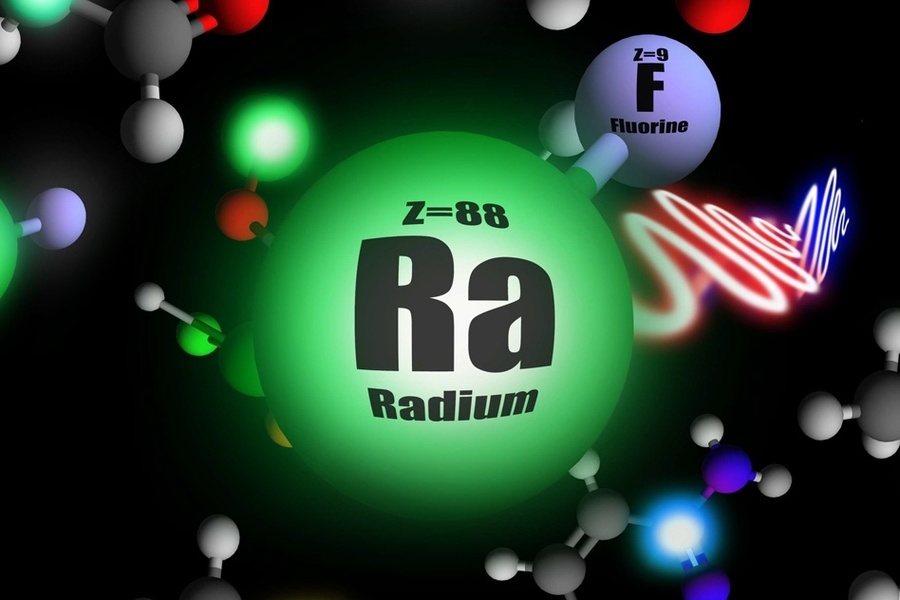Surprising findings sometimes come in small packages. And sometimes those small packages have to be delivered by very big systems. Physicists at MIT made some surprising findings from a very small radioactive molecule that was created in an accelerator at CERN. They believe that, if studied closely enough, these new types of radioactive molecules could shine some light on why there is more matter than anti-matter in the universe.
Radioactive molecules might seem a strange place to start looking for the answer to one of the fundamental questions that has stumped modern day physics. But these aren't your everyday radioactive molecules - they usually only exist in neutron star mergers or supernovae. In fact, this is the first time they have been created synthetically.
Video discussing the anti-matter / matter asymmetry problem the new radioactive molecules could help solve.Credit - SciShow YouTube ChannelWhat makes them interesting is their number of neutrons. Neutrons usually don't have much of an effect on a molecule, being one millionth the size of the molecule it is a part of. But the physicists were able to measure the impact of the neutron on its molecule's energy. That in itself is a breakthrough, but it was by no means an easy road to get there.
First, the researchers, led by assistant professor Ronald Fernando Garcia Ruiz of MIT, had to create the novel molecule. They were particularly interested in radium monoflouride (RaF), an unstable radioactive molecule that only exists for a few seconds after it's created. After successfully creating some for the first time last year, they turned their attention to different isotopes of this unstable molecule.
The isotopes in question contained different numbers of neutrons. To create these different isotopes, the researchers developed a disc made up of uranium-carbide and injected carbon fluoride gas. After zapping it with a low-energy proton beam at CERN, the researchers released a veritable zoo of new molecules, including 5 different isotopes of RaF.
To capture these short-lived isotopes, the researchers used a series of ion traps, lasers, and electromagnetic fields to isolate them. They then measured the mass of each of the 5 molecules in order to estimate how many neutrons it contains. Another laser blast then measured the quantum state of each molecule.
Video describing on the particle colliders at CERN work.Credit - Science Channel YouTubeSurprisingly, a difference of a single neutron can make a measurable impact on the overall quantum energy state of the molecule it is sitting in. This finding is important as a proof of concept, as it could lead to even more dramatic findings for dealing with the symmetry problem.
So how does symmetry fit into this whole exercise of creating these new radioactive molecules? Radium itself is a bit of an outlier on the symmetry scale, with a atomic nucleus that is shaped more like a pear than the more symmetrical sphere that is present in most other atoms. Using this off-kilter nucleus as a basis for the RaF molecule seems to make the molecule itself more susceptible to changes in energy states that would otherwise be imperceptible, such as the present (or absence) of a neutron.
Discussion of how to measure quantum variables in the classical world.Credit - PBS Spacetime YouTube ChannelRaF could therefore potentially be used as a detection mechanism for the infinitesimal forces that would be indicative of symmetry-breaking physics. Proving its susceptibility to the influence of a neutron is only the first step toward the much more fine-tuned analysis needed to explore symmetry. But, if the almost imperceptible effects that would be indicative of symmetry breaking forces are present, the RaF molecule, or others like it, are likely our best chance at detecting them.
What a detection it would be - questions from the anti-matter / matter imbalance to dark energy could be impacted by such a discovery. But there's still a lot of work to be done before any potential surprising findings - including increasing the measurement sensitivity of energy difference by several orders of magnitude. Maybe a bigger particles accelerator can do the trick?
Learn More -
MIT - New clues to why there’s so little antimatter in the universe
MIT - Physicists measure a short-lived radioactive molecule for first time
CERN - Isotope Shifts of Radium Monofluoride Molecules
Lead Image -
Stock image representing an atomic structure.
Credit - MIT News
 Universe Today
Universe Today

